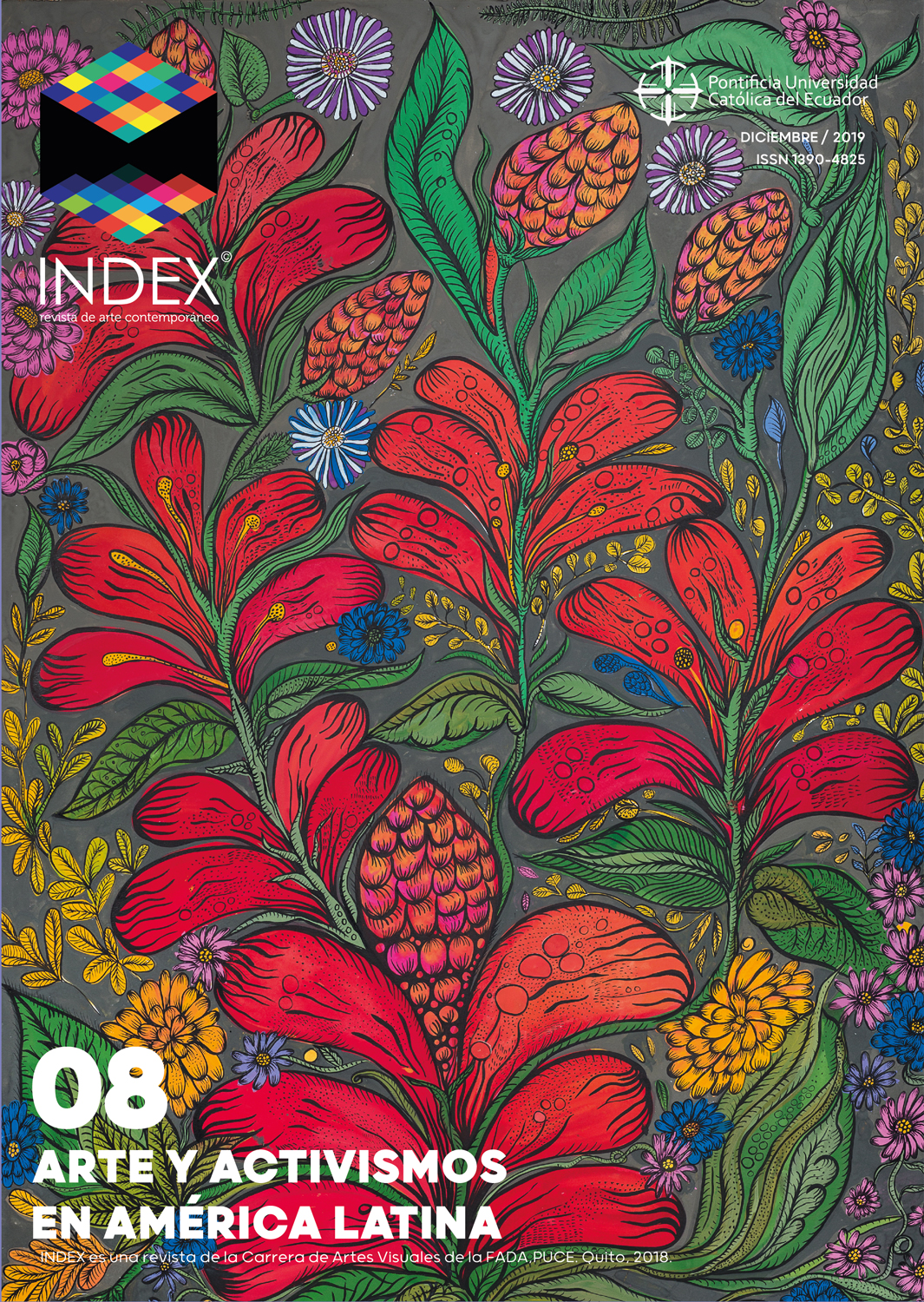Imagine the possibility Interview with Graciela Carnevale
Main Article Content
Abstract
Tucumán Arde was a project developed between Rosario, Tucumán, and Buenos Aires, by Grupo de Artistas de Vanguardia in 1968, this project challenged the action in the face of the situation of homelessness and poverty faced by the population of Tucumán after the dismantling of the sugar industry. In doing so, the project expanded the conventional boundaries of artistic practice by collectively acting from art in a way to get involved in reality. Silenced at the time by the dictatorship and subsequently forgotten, Tucumán Arde is considered a paradigm of political, conceptual and social art nowadays. In addition to the specific characteristics of Tucumán Arde, its positioning dimension as an artistic practice integrated at the Arte Útil Archive. We are interested in revisiting it as a study case on activist, and socially engaged practice. What are the risks involved? What is the role of Education? How significant is the impact of empowering living archives? This interview is a compendium of a series of conversations held between June and December 2018.
Downloads
Article Details
Index, revista de arte contemporáneo maneja sus derechos bajo licencia Creative Commons Reconocimiento-NoComercial 4.0. En ese sentido los envíos quedan sujetos a la decisión del autor.
References
https://www.laizquierdadiario.com/A-52-anos-del-cierre-de-los-ingenios-azucareros-de-Tucuman
Bruguera, T. (2012) Reflexiones sobre el Arte Útil. En Y. Aznar. y P. Martinez (Eds.), ARTE ACTUAL: Lecturas para un espectador inquieto (pp. 194 "“ 197). Madrid, España: CA2M Centro de Arte Dos de Mayo, Dirección General de Bellas Artes del Libro y de Archivos. Recuperado de: http://www.taniabruguera.com/cms/592-1-Reflexiones+sobre+el+Arte+til.htm
Fiori, L. y Vega, V. I. (2009). Grupo de artistas de vanguardia: hacia una revolución ética y estética. En XII Jornadas Interescuelas/Departamentos de Historia. Bariloche: Departamento de Historia, Facultad de Humanidades y Centro Regional Universitario Bariloche. Universidad Nacional del Comahue. Recuperado de: http://cdsa.aacademica.org/000-008/1180.pdf. Consultado 27 octubre 2018.
García, N.(2012) La universidad popular de "La Vigil", Rosario (1964-1977). Revista de la Escuela de Ciencias de la Educación. (07). Recuperado de: https://rephip.unr.edu.ar/handle/2133/2875?show=full
Garrido, R. (octubre, 2015). CAE-Ciclo de Arte Experimental en Rosario, Ramona. (28) Recuperado de: http://www.ramona.org.ar/node/57734.
Longoni, A y Mestman, M. (2008). Del Di Tella al Tucumán Arde. En Vanguardia artística y política en el 68 argentino. Buenos Aires: Eudeba.
Longoni, A. (2014). El mito de Tucumán Arde. En Artelogie, (6), p. 24. Recuperrado de http://journals.openedition.org/artelogie/1348. doi: 10.4000/artelogie.1348
La Vanguardia deliberó en Rosario (14 de agosto de 1968). La Capital. Recuperado de http://archivosenuso.org/viewer/2238
Premios con policía: "Ver y Estimar" con resultados (20 de mayo de 1968). Análisis (no. 375), p. 32. Buenos Aires.

